Featured Images

Another Lunar Enigma
Ina (18.66°N, 5.30°E) is one of the most enigmatic landforms on the Moon. First discovered in Apollo-era photographs, then intensely studied with modern observations, its nature is still unknown. The Sun is shining right-to-left, 40...
Published on 20 Jun 2018
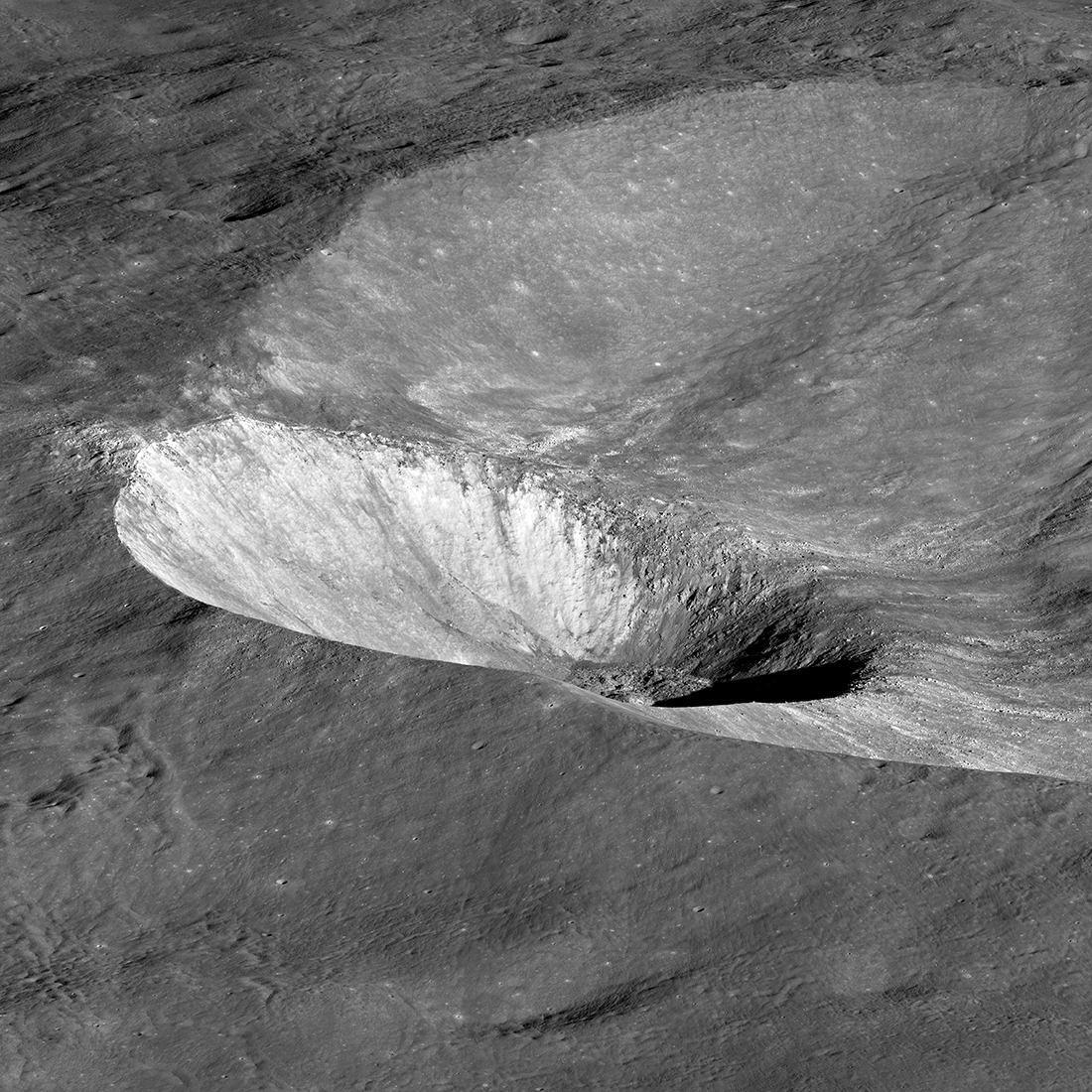
Hawke Crater
Hawke crater, 13.2 km wide, is noticeably tilted because the impactor - an asteroid or a comet - that excavated it struck the sloping inner wall of Grotrian crater. Visible are light-colored rays that attest to the crater's youth, as...
Published on 03 May 2018
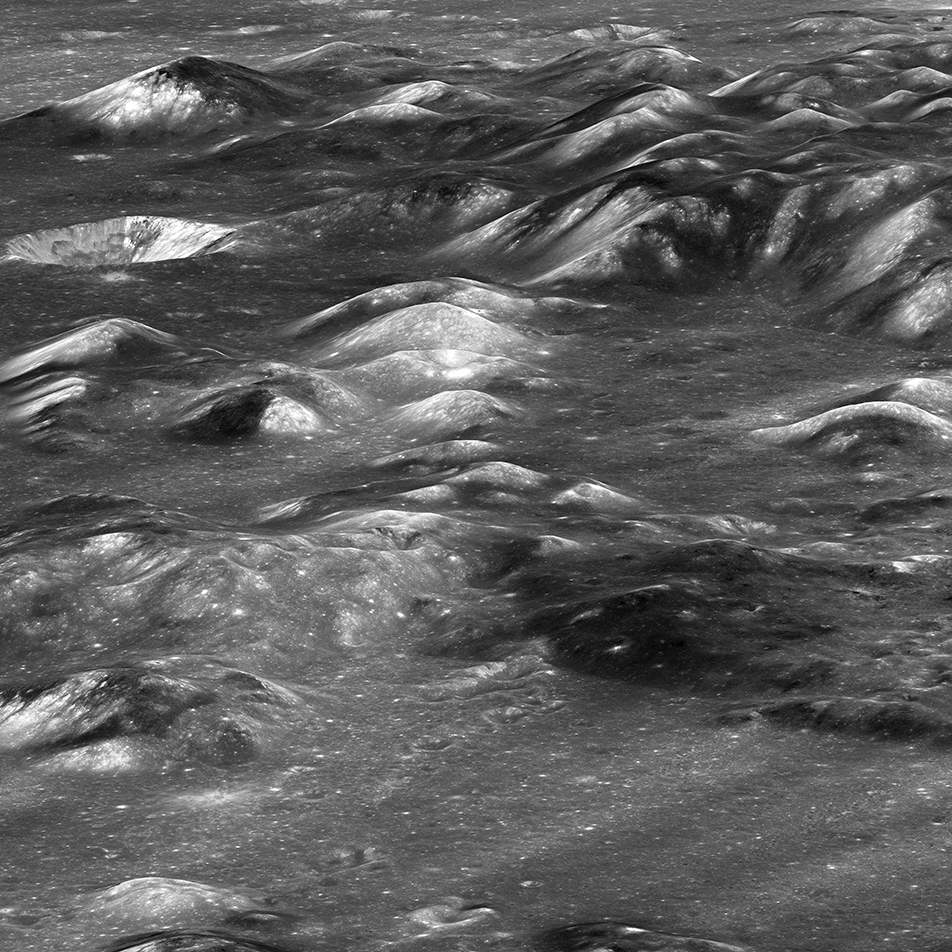
Montes Carpatus
The Montes Carpatus region (16.67°N, 332.93°E) contains numerous examples of volcanic materials. The low albedo (dark) patterns may indicate pyroclastic (explosive) material that erupted over 3 billion years ago. Tobias Mayer G crater...
Published on 08 Mar 2018
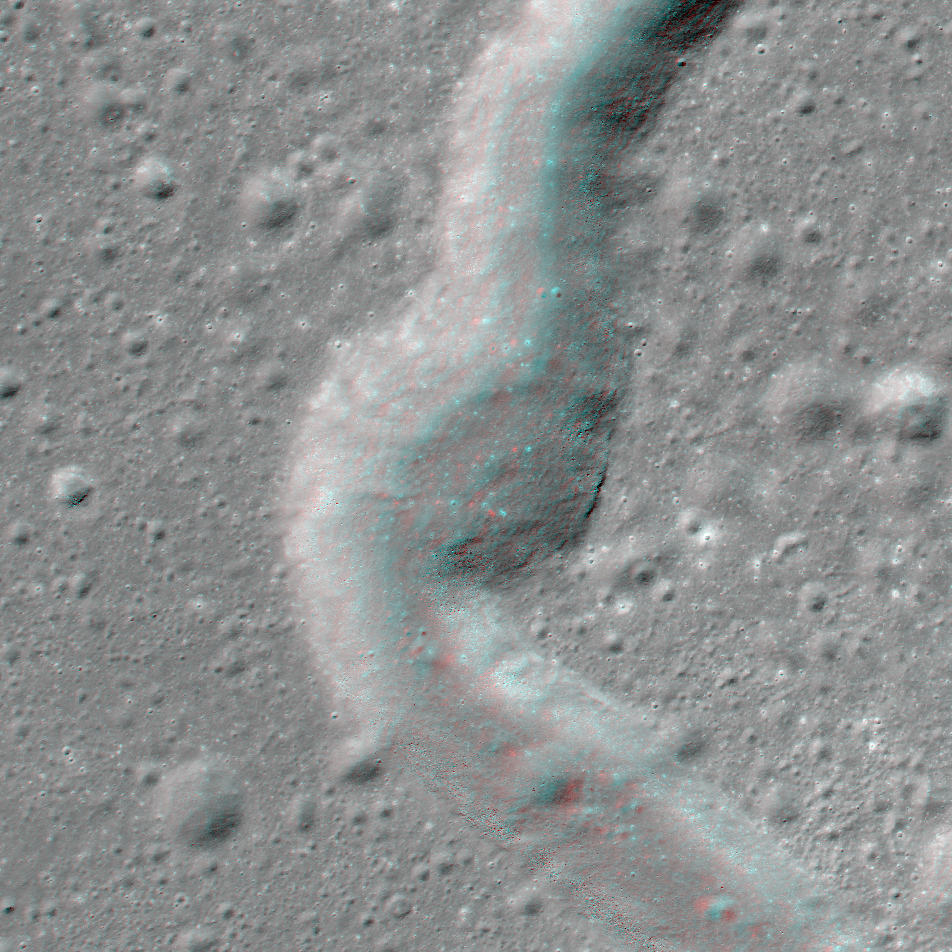
NAC Anaglyph: Rima Sharp
A bend in Rima Sharp, a sinuous rille that can be traced more than 250 km and spans the boundary between mare-filled Sinus Roris (to the north) and Oceanus Procellarum (to the south) [NASA/GSFC/Arizona State University].
Published on 26 Jan 2018
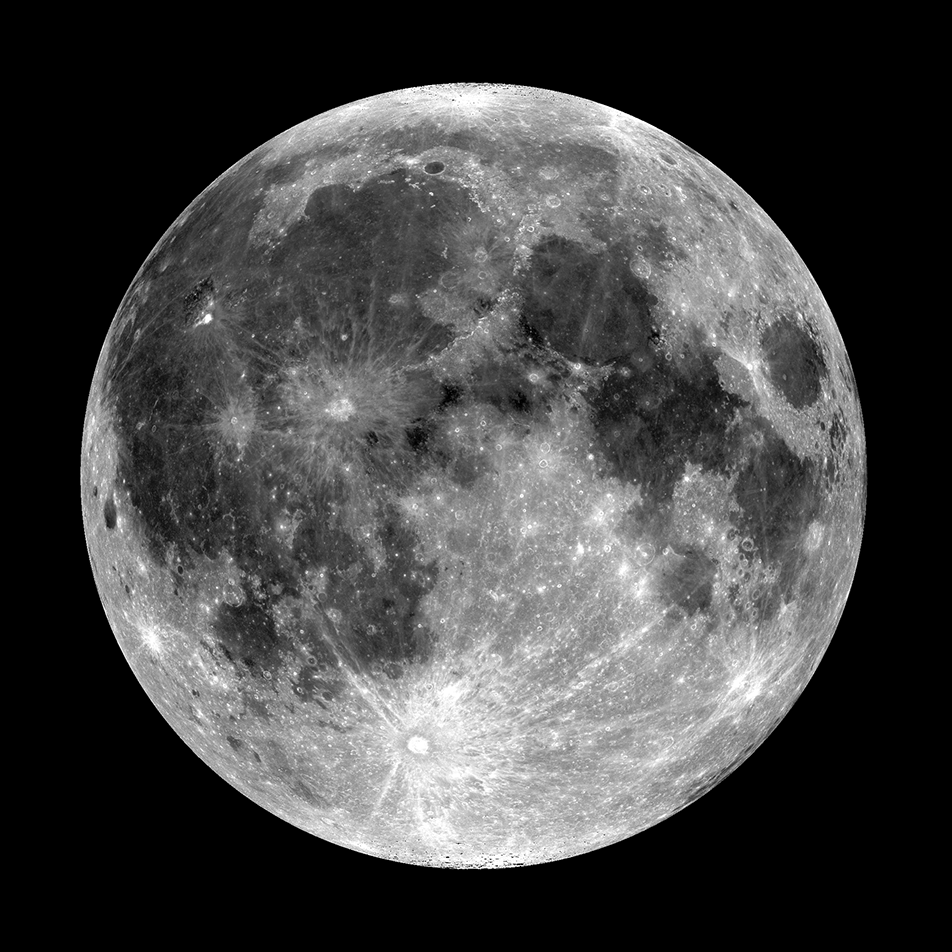
Ilmenite Seen with Ultraviolet Light
The low-reflectance portions of the Moon are composed of mare basalts, which formed via large eruptions of lava in the ancient lunar past. Variations in reflectance within the mare depend on composition, in particular, the abundance of...
Published on 01 Dec 2017

Every Crater on the Moon (Larger than 5 km)
New work from the LROC team resulted in a map of all detectable craters on the Moon between 5 and 20 km in diameter (red circles). When combined with an existing map of craters larger than 20 km in diameter, the differences in the...
Published on 13 Nov 2017
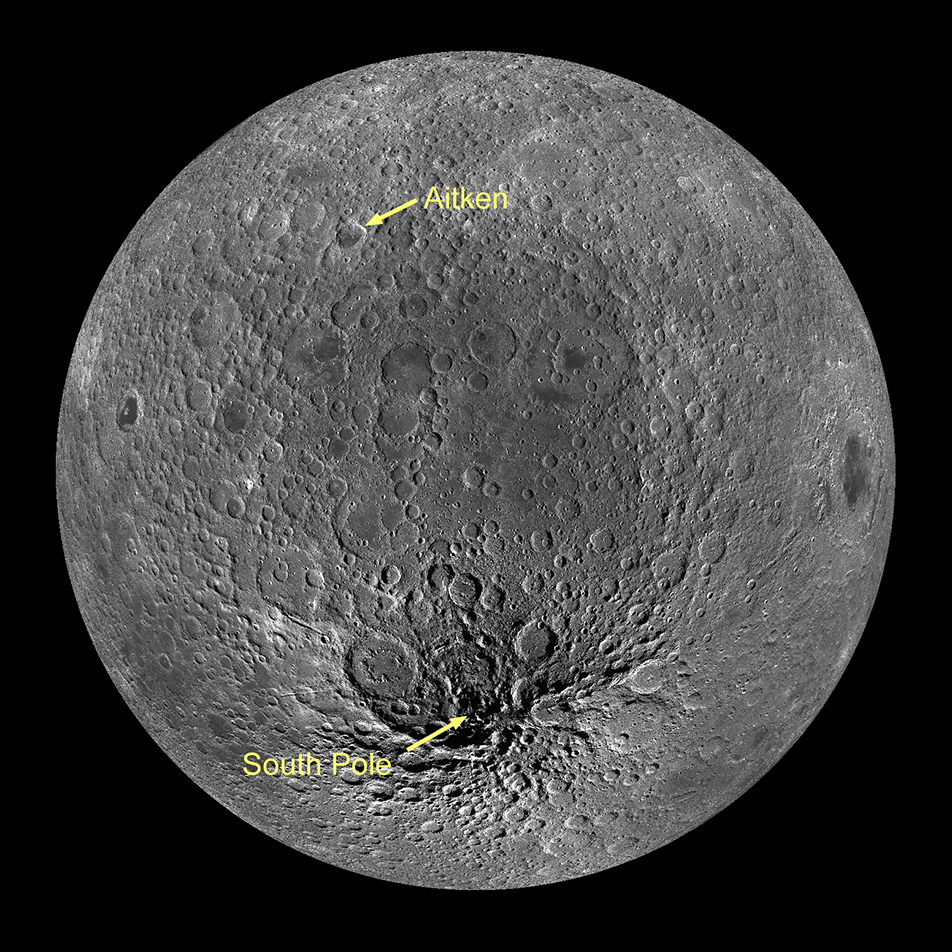
The History of Volcanism in the Moon's Largest Basin
A view of the Moon's largest impact feature, the South Pole–Aitken basin, so named because it stretches between Aitken crater and the south pole. The orthographic projection here centered on the basin (53°S, 191°E) highlights how much...
Published on 02 Nov 2017
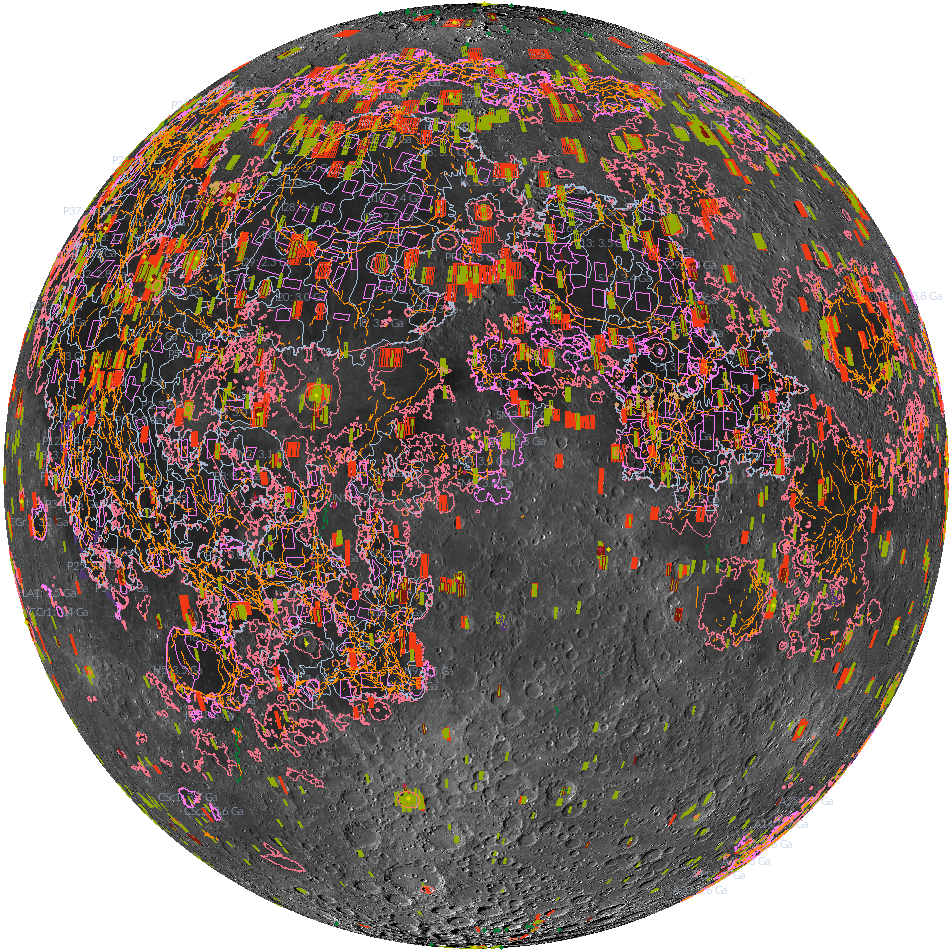
'Shaping' Lunar Science with Vector Data
Twenty new shapefiles created by the LROC Team are now available! A few of the shapefiles shown here include mare age units, footprints of digital terrain models (DTMs), and the locations of small geologic features such as...
Published on 18 Jul 2017

New View of Rare Volcanism on the Moon
The Compton-Belkovich Volcanic Complex central caldera complex was first discovered in LROC images (61.20° N, 100.27° E; WAC mosaic with NAC image M103852760R in the center). Variations in the reflectance values were used to estimate...
Published on 05 Jun 2017
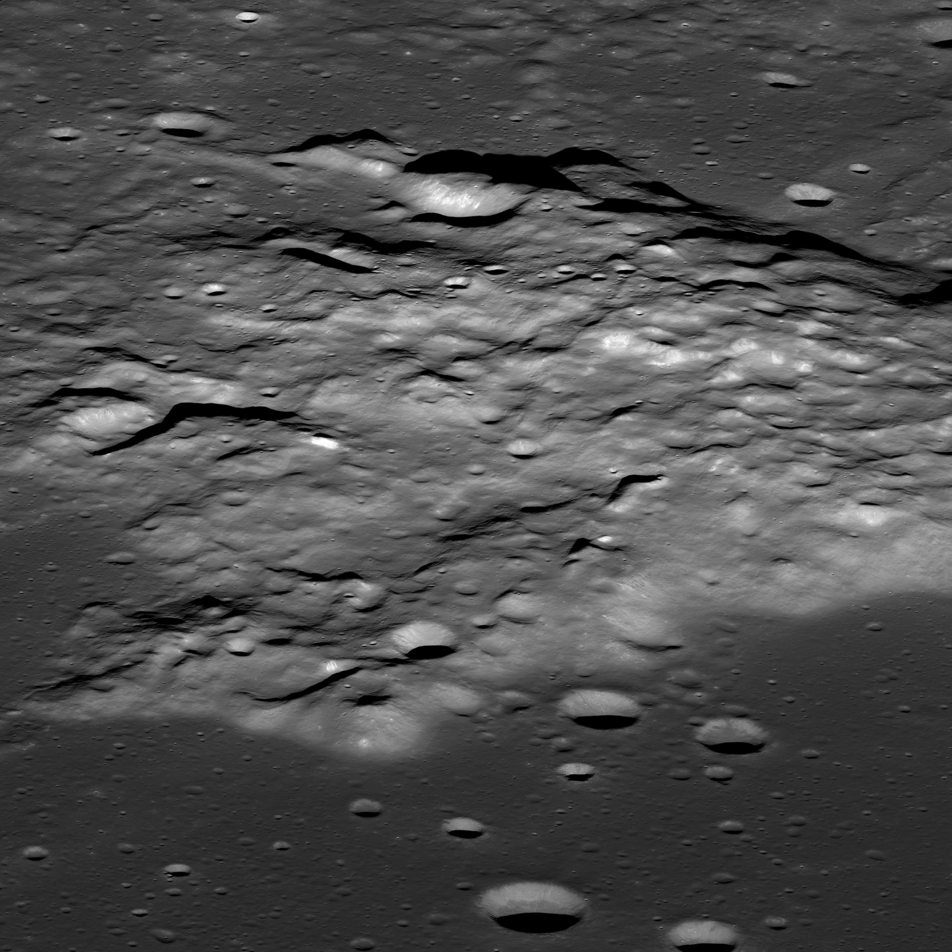
Mons Hansteen: A Window into Lunar Magmatic Processes
Oblique view of Mons Hansteen, located near the southern margin of Oceanus Procellarum at 12.3° S, 309.8° E. This enigmatic landform is thought to be a volcanic complex and one of only a handful of known sites on the Moon composed of...
Published on 10 Apr 2017
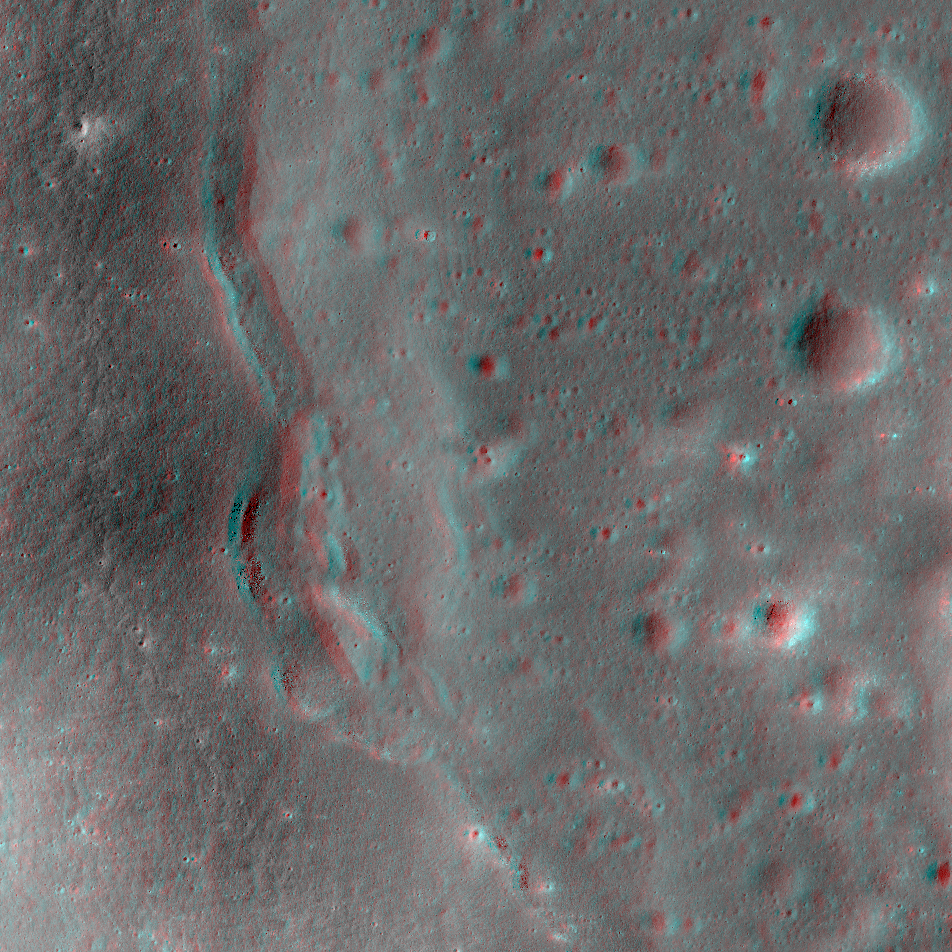
NAC Anaglyph: "Bathtub Ring" of Lava
The pit-like Bawa crater (off-center left) is located on the edge of Lacus Solitudinus. The pit is congested with old lava and spiny, razerback ridges. The ridges are composed of debris that slumped from the upslope (western) wall above...
Published on 17 Mar 2017

NAC Anaglyph: Fissures in Bowditch Crater
A complex grouping of fissures in the mare-flooded Bowditch crater that were once likely sites of volcanic eruptions in this area. Bowditch crater is part of the lava-flooded region named Lacus Solitudinus [NASA/GSFC/Arizona State...
Published on 24 Feb 2017
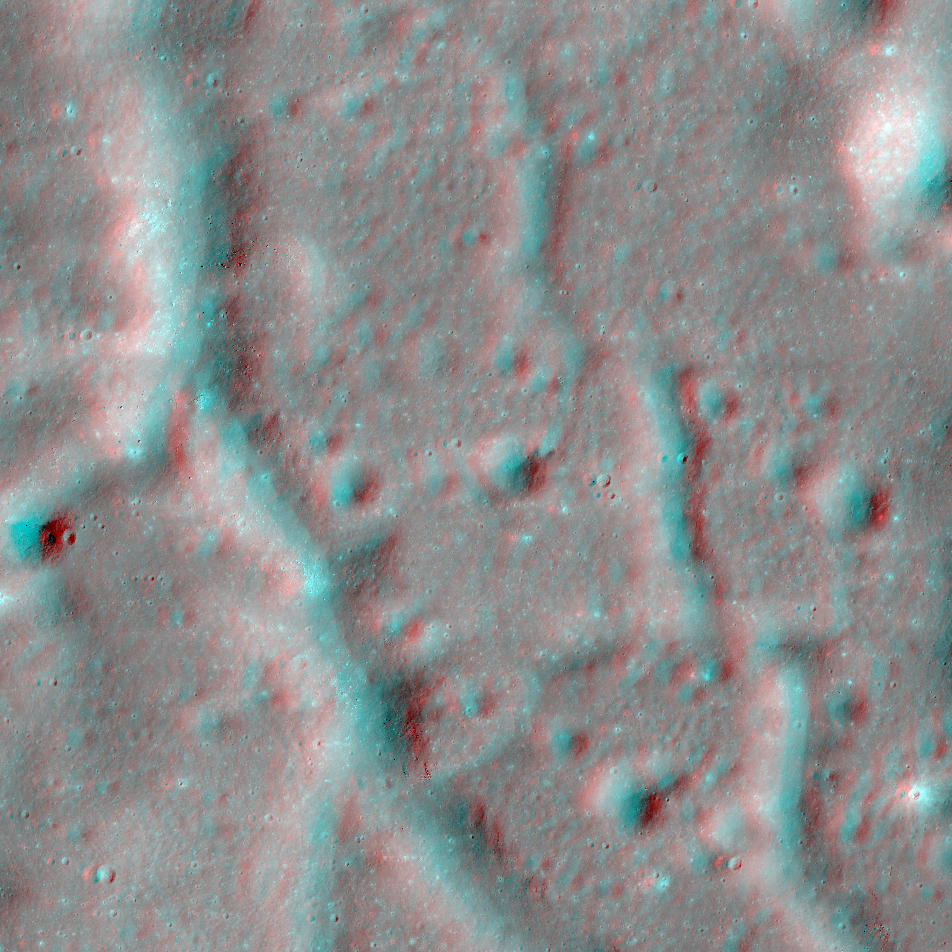
NAC Anaglyph: Briggs Fractures
Fractures in the floor of Briggs crater suggest intrusive volcanic activity , i.e. magma rising from below to push up the crater floor, causing it to crack [NASA/GSFC/Arizona State University].
Published on 10 Feb 2017
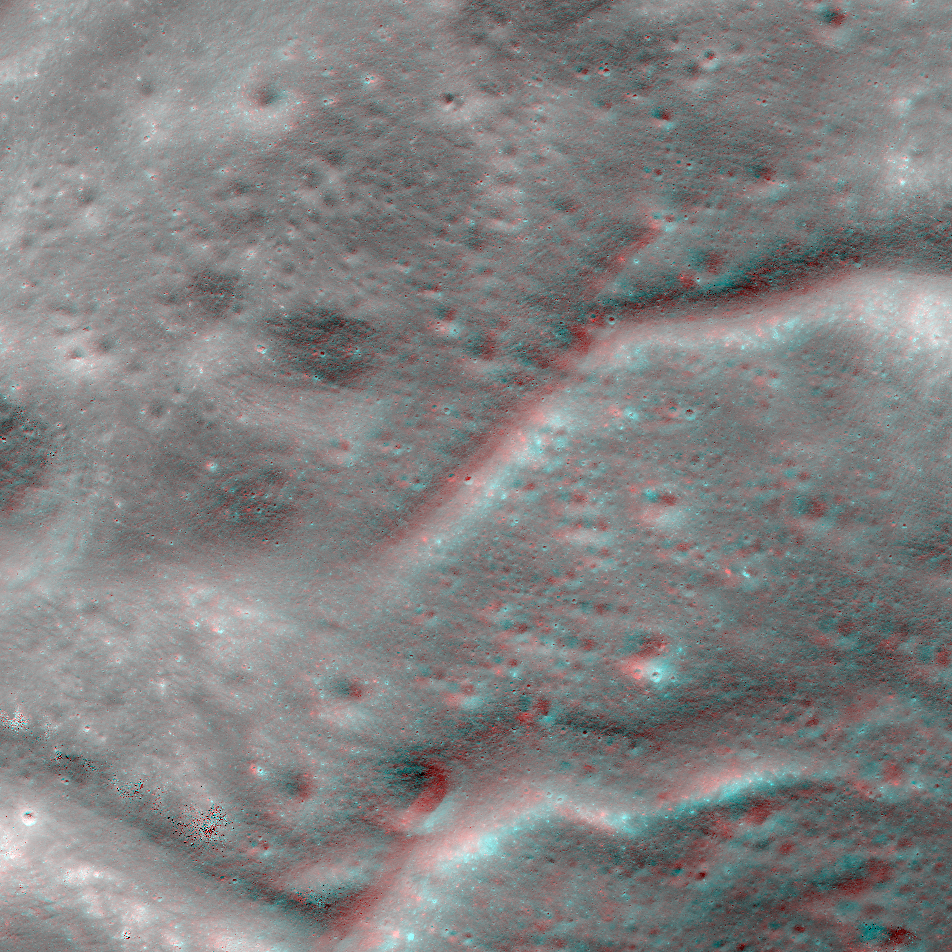
NAC Anaglyph: Fenyi Fractures
Fractures in the floor of Fenyi crater hint at intrusive magmatic activity [NASA/GSFC/Arizona State University].
Published on 19 Dec 2016
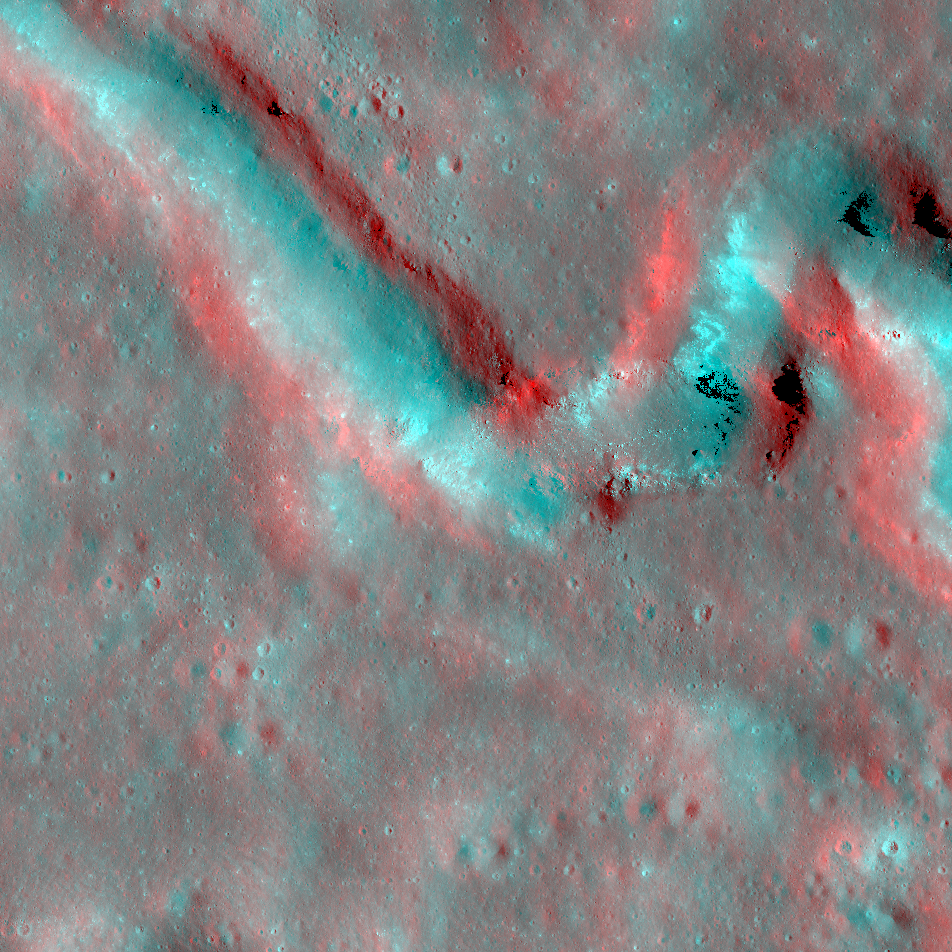
NAC Anaglyph: Orientale Rille
A sinuous rille in the Orientale basin exhibits fresh exposures where landslides have occurred along steep portions of the walls [NASA/GSFC/Arizona State University].
Published on 18 Nov 2016
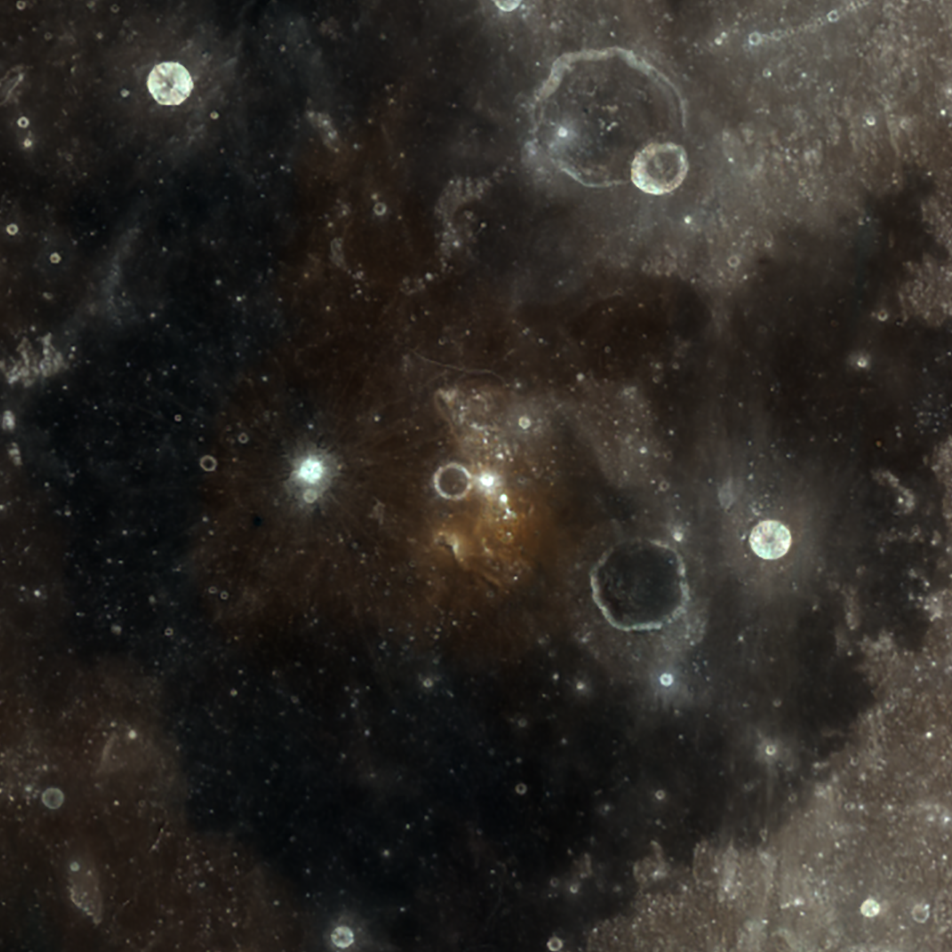
Color of the Lassell Massif
A shock of color on the Moon! The Lassell Massif (a so-called "red spot") in Mare Nubium appears orange in the center of this WAC color composite image. The image was derived by assigning red to 689 nm, green to 415 nm, and blue to 321...
Published on 12 Sep 2016
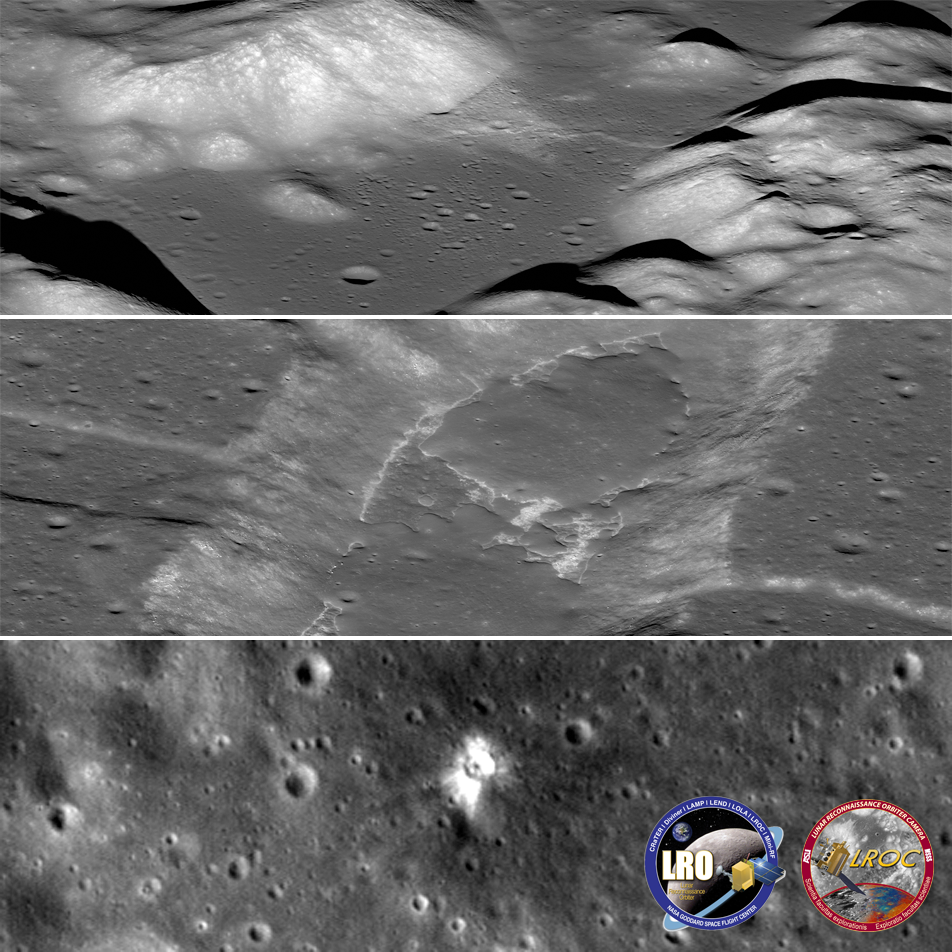
What's Next for LRO?
LRO and LROC will continue to explore the Moon during the mission's third extended mission to understand fundamental processes that shape our Solar System.
Published on 22 Aug 2016
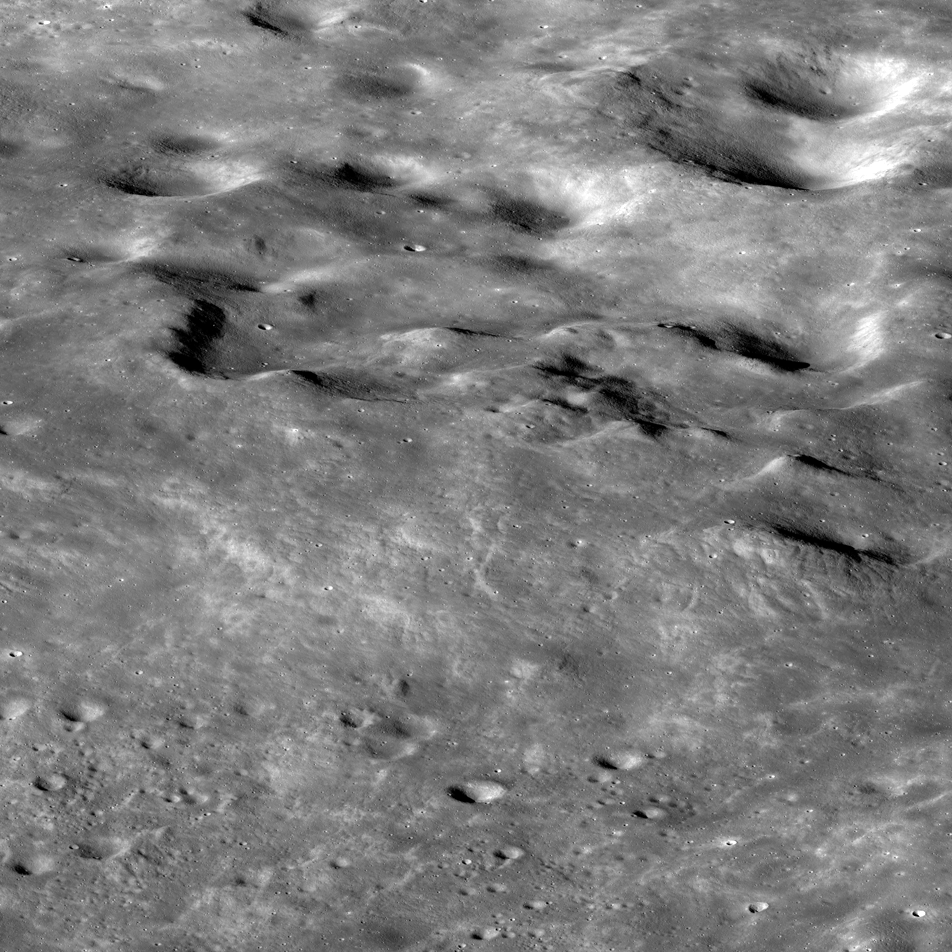
Age of the Compton-Belkovich Volcanic Complex
A small portion of the Compton-Belkovich Volcanic Complex (61.20°; N, 100.27°; E) as you would see it from the window of your personal lunar module flying at an altitude of 52 km above the surface, looking to the west-southwest. The...
Published on 29 Jun 2016
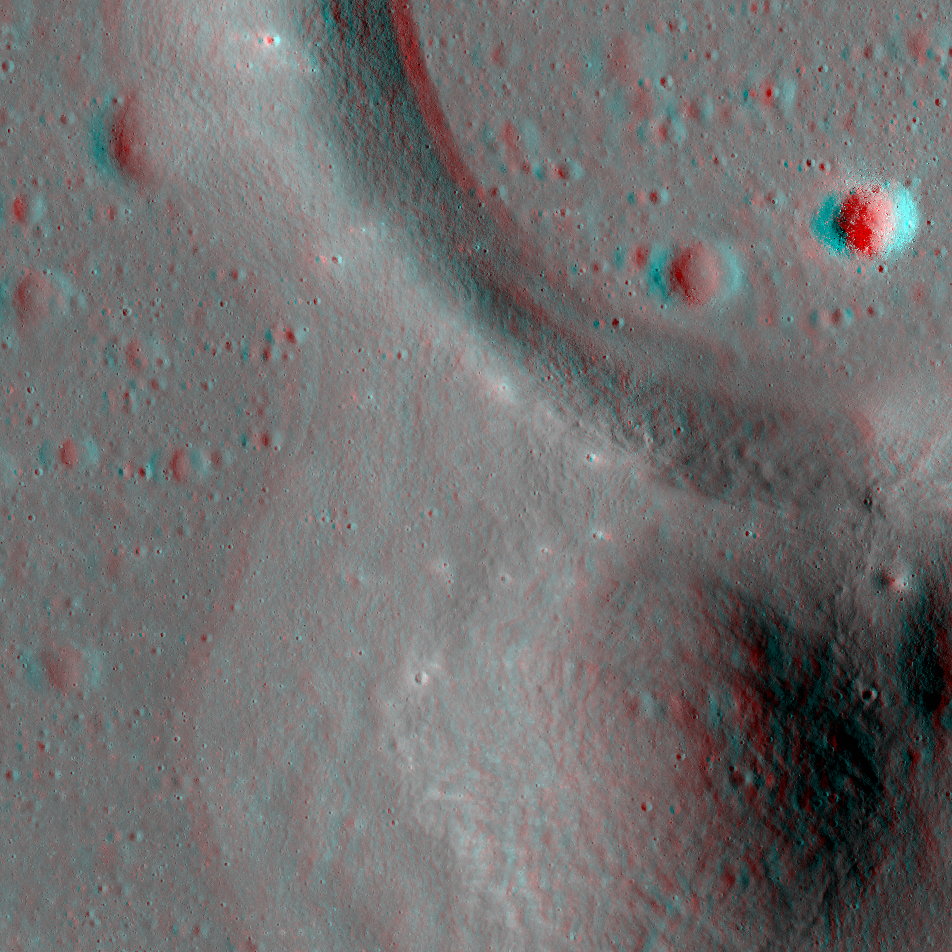
Dome in Mare Vaporum
NAC anaglyph of a prominent volcanic dome in Mare Vaporum [NASA/GSFC/Arizona State University].
Published on 20 Nov 2015

NAC Anaglyph: Aristarchus Rille
Vallis Schroeteri, a large lunar rille, winds its way across the Aristarchus Plateau. At this location, Vallis Schroeteri is nearly 4.5 km across! Note the smaller, more sinuous rille nested within the larger rille [NASA/GSFC/Arizona...
Published on 13 Nov 2015